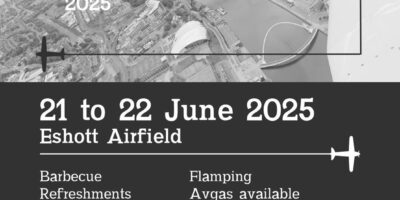For quite a while now I’ve been banging on about the CAA’s inability to consistently communicate safety critical information clearly. I’ve whinged about them wrapping up important information in massively complex documents, made worse when those documents then refer to 10 others, some of which refer to yet more impenetrable stuff. And if the whole legal ‘this is a matter of law dontchaknow’ reasoning is valid, which it very often is, I’ve urged them to help us out by providing a plain English explanation that we pilots can understand.
So hats off to whoever wrote the ‘Preventing infringements of controlled airspace’ update. It’s easy to understand, educational and informative. It’s everything something like this should be. Genuinely, well done to all involved. Please hold it up as an example of how it should be done. And while you’re holding it up as an example, would you mind waving it under the noses of anyone who has anything to do with creating Notam? I know I’ve just said that it’s a great document (and it is), but it only needs to exist because some
Notam creators haven’t asked themselves three very basic questions: ‘what am I trying to communicate, could it be misunderstood, how can I make it clearer’…
“Hats off to whoever wrote the ‘Preventing infringements of controlled airspace’’’
A few months ahead of the Wright Brothers first flight, Orville sent an assistant to Montreal to visit the International Civil Aviation Organisation (ICAO). There he found staff idling their time away while waiting for the 1944 Chicago Convention to be signed – and Tim Horton to be born, play a bit of hockey and eventually open his famous coffee and doughnut stores. You can imagine the excitement when the Wright’s assistant asked them to create a system for disseminating future important safety information. Initial proposals centred on a flag semaphore system, and a sub team produced an entire ICAO Annex in only 12 years, but one of ICAO’s modern reformers then pointed out that people might eventually fly at night, and insisted on using modern telegraphy, which was thought to be reliable, even if it had been around for less than 60 years.
In parallel, policy and technical teams got together and designed a robust system where Notam would have seven different fields each relating to a specific piece of information. Early on in the telegraphic transmission, the duration of the Notam would be stated, followed by a free text field in which things could be explained. Only later came the applicable timings. The policy team wondered if this might cause confusion, but the tech team insisted that it would be fine, and given that Notam would have to be manually entered and distributed, there would be specialists on hand at either end to advise creators of any confusion. Job Done.
Except that the current system has some big structural weaknesses. Weaknesses that were highlighted and explained in the excellent ASI page that I mentioned above. Basically, thanks to the way a Notam is structured, you’d better make sure you read all of it properly and carefully, because it’s entirely possible to create a correct and system compliant Notam that starts EGLL From 20/07/07 22:59 to 20/07/10 London CTR is deactivated and will be reclassified as Class G… Normal people might read that and assume it means what it says, but if you expand the Notam you’ll discover that instead of being free to play in Heathrow’s CTR for a couple of days in July, it’s only closed for 15 minutes from 1am every morning while the controller pops out for his EASA-mandated sausage roll and cup of tea.
There are two takes on this. The traditional view ‘while apps make life a lot easier, it’s still the pilots responsibility to properly brief before flight’, and the correct view, ‘while apps make life a lot easier, it’s still the pilots responsibility to properly brief before flight and those responsible for issuing Notam should make every effort to encompass the critical elements in the bit that pilots are going to read first’. In other words, before picking up their quills, the Notam creators should ask themselves: ‘what am I trying to communicate, could it be misunderstood, how can I make it clearer’…
The CAA puts a lot of effort into a wide range of aviation safety initiatives (and only a tiny number are really dumb), but a project aimed at all Notam creators would make a significant improvement to everyone’s lot, and while they’re a diverse group from a wide range of organisations, it’s got to be a quicker, easier and more beneficial job to contact, communicate and educate them than some of the other projects that are underway.
I know some of the skygods out there will be complaining about snowflakes wanting everything dumbed down, but honestly that’s more about pretending you’re superior and resisting change than it is about flight safety.
We have a whole bunch of ‘wuns, toos, trees and fowers’ to help avoid confusion, and a list of mandatory read back items designed to specifically check that critical information has been communicated and understood correctly. An educational programme and reference resource for Notam creators would give a high value result for a relatively low cost input. You could even claim the work as ‘world leading’ – that’s always popular with the paymasters.







